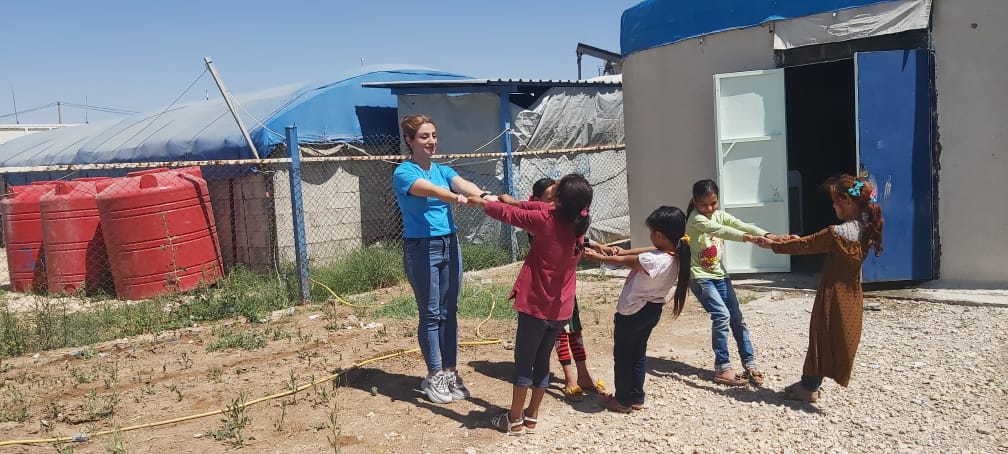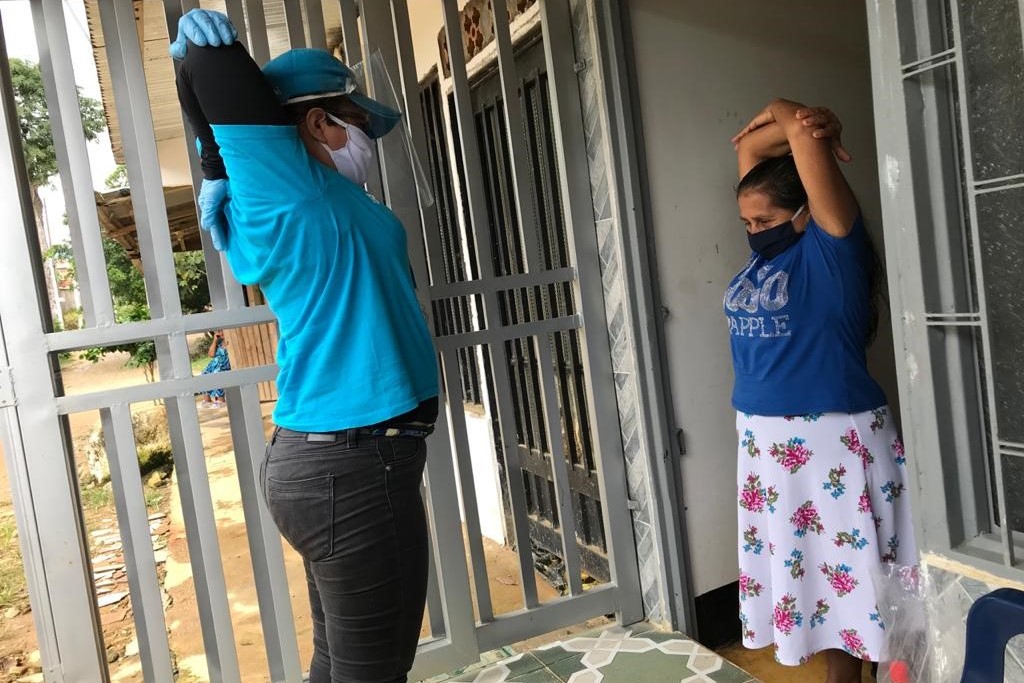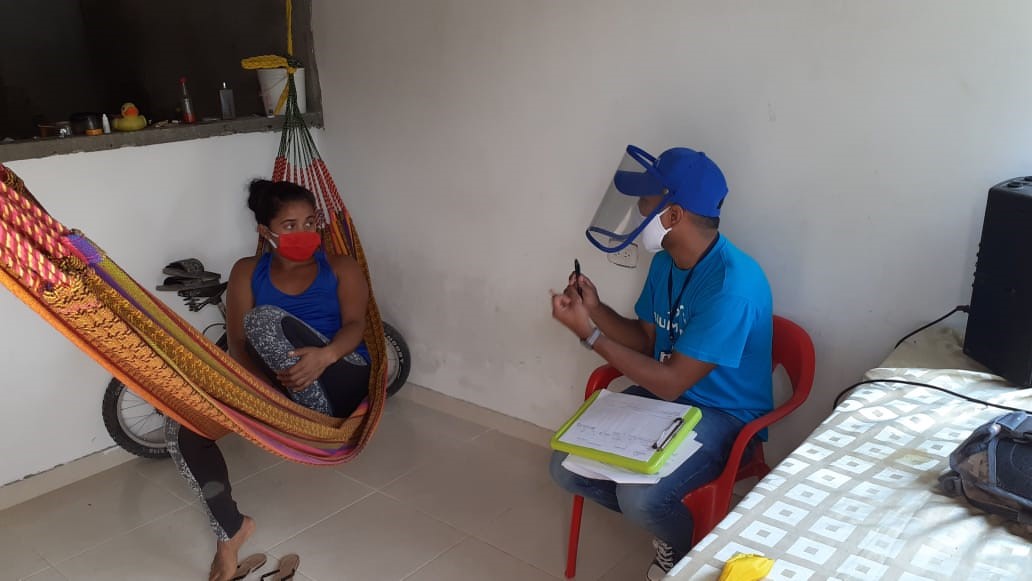“These real-life heroes are rarely the stuff of movies or video games.”
In recent years, global crises caused by war, acts of terrorism, natural disasters, and pandemics have torn communities apart. In the midst of these tensions, humanitarian aid workers are often the ones on the front line, struggling to navigate risks as they deliver assistance and keep communities safe.
“What I have learned is that real humanitarian workers’ lives are far from glamorous. Their humbling, grueling work too often goes unrecognized,” said Haystan Issa, Blumont’s Senior Protection Officer in northeast Syria. “Although you might see them on the nightly news, debriefing from a war zone or an earthquake aftermath, there is plenty you never witness.”

Haystan plays with children in a displacement camp in northeast Syria
While the work is different from country to country as projects adapt to local challenges and needs—Blumont teams have a consistent, shared commitment to the communities we serve. It is this commitment that drives teams to continue work despite risks.
In Popayán in southwestern Colombia, an ethnically diverse population of indigenous and Afro-descendant groups see illicit mining and crops, and frequent threats by illegal armed groups and drug cartels. Blumont teams working to build community cohesion and help people cope with the trauma of war and conflict, recognize that the risks are not all in the past.
“When a threat goes out against the communities that inhabit a territory, worry, and fear spread,” said Juan José, Blumont’s Regional Director in Popayán. “Attacks on social leaders [in the communities where we work] cause disharmony because as the leader is killed or injured, the connecting thread in a community is lost.”
To overcome these challenges, teams work with local organizations—building trust and collecting information to shape and adapt programming.

A psychologist in Colombia teaches a woman stretching exercises to help her cope with stress
The factors that shape the environment humanitarians operate in are mostly outside their control, often driven by politics or diplomatic influences. For staff from the local area, changes impact not only how they work, but their lives and families as well.
When Turkish forces moved into Syria and Kurdish-controlled territories in October 2019, more than 300,000 people were force to flee their homes, including local aid workers, who went from supporting displaced communities to becoming displaced themselves.
Ibrahim, a Blumont field monitor in Syria, remembers the exact moment his life changed: “The Turkish invasion began at 4 pm on October 9th, 2019 in Tal Abyad City. At that time, I was doing fieldwork in Ein Issa, but my family was trapped in Tal Abyad. I faced great difficultly and danger entering the city because of the heavy bombing, but thankfully I managed to get my family out.”

Ibrahim distributes bread in a displacement camp
Frontline humanitarian aid workers regularly put their own lives at risk for the sake of others and the the emergence of COVID-19 further complicated dangerous situations for workers and communities.
“It has been necessary to be disciplined when working with families, without forgetting that at these moments in history, it is important to have a mental attitude open to change,” said Carlos Coronado, a psychologist in Colombia. “I want to be positive and grateful for the opportunity to be alive and use that life to serve others.”

Carlos during a home visit with victims of armed conflict
In Afghanistan, limits on movement made it difficult for Dr. Abdul Hadi Malekzai, a Blumont health officer, to reach patients and he saw the impact of the virus spread beyond health.
“COVID-19 affected people in the communities in terms of business, economy, health and transportation,” said Dr. Malekzai. “During the lockdown, it was difficult to move freely and visit recovering victims, but we managed to provide assistance to them through our local networks,” he said.
Dr. Malekzai’s motivation to continue despite the challenges reflects his overall approach to humanitarian work.
“I chose the medical field as my profession to assist the poor and needy people in my country,” he said. “So, I will not hesitate to assist them in any condition, whether it is COVID-19 or any other crisis.”

Dr. Malekzai during a medical check-up with a young patient
This passion to help and recognition of a common thread of shared humanity lies at the heart of aid work.
For Carlos, just seeing the impact his visits have on the emotional health of families who have been displaced by violence in Colombia is enough to keep him going.
“For many families, those visits are the only opportunity they have to talk about their fears, sadness, or anger,” he said. “Seeing a bit of encouragement on their faces after being listened to is an incentive for me and is the reason I continue providing care with the best attitude.”
“Real-life aid workers do far more than distribute aid. To be effective at long-term development, you have to be trusted and you need to stick around,” said Haystan. “These real-life heroes are rarely the stuff of movies or video games. Yet make no mistake, they do fight villains.”



